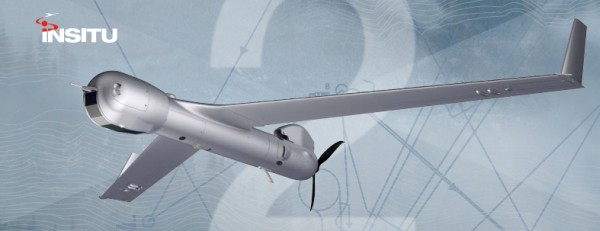Podcast: Play in new window | Download (Duration: 32:09 — 18.5MB)
 A new ScanEagle from Insitu, an Ohio UAS test site is up and running, students learning about UAVs in a precision agriculture program, ABC creating drone journalism policies, and a drone on an urban rescue mission.
A new ScanEagle from Insitu, an Ohio UAS test site is up and running, students learning about UAVs in a precision agriculture program, ABC creating drone journalism policies, and a drone on an urban rescue mission.
News
Insitu Launches New ScanEagle 2 UAS
The new Insitu ScanEagle 2 features a slightly longer fuselage, the same wingspan, and a new engine from Orbital. Endurance of this fixed-wing system grows to 24 hours from 16.
US Navy seeks information on sense and avoid radar for Triton UAS
The Naval Air Systems Command (NAVAIR) has been unable to develop sense and avoid radar for the Triton. They’ve issued an RFI (Request for Information) and NAVAIR wants a scaleable SAA box that is modular and deployable to other platforms.
The Triton is a naval version of the RQ-4A Global Hawk, with a different wing to handle higher stresses.
WSRI conducts its first test of UAS aircraft
Wright State Research Institute (WSRI) conducted its first UAS research flight at Wilmington Air Park using a senseFly eBee
3D Aerial Solutions piloted the eBee used to conduct modeling and simulation research, to gather terrain data for 3D flight simulation environments. The flight operated under a recently awarded certificate of authorization (COA) from the FAA.
Sinclair sees UAS payoff in future jobs
Sinclair Community College in Ohio sees a coming boom in unmanned aviation opportunities, and they’re investing millions to help train a UAS workforce. They’ve spent over $5 million on curriculum, flight simulators, and more than 50 UAVs. The college will use its field house to serve as the largest indoor unmanned aerial vehicle flying range in Ohio.
Sinclair plans to open a National UAS Training and Certification Center using $5 million of their money and $4 million from State funds. Sinclair has partnered with Ohio State University and additionally, has established partnerships with Wright State University, the University of Dayton, the Air Force Research Laboratory, the Air Force Institute of Technology, and other educational institutions.
LRSC students study ag potential of UAS
Lake Region State College’s Precision Agriculture Center in North Dakota wants its graduates to have UAV skills. The program offers both theoretical and practical core courses and hands-on training.
The average North Dakota farmer spends about $1.3 million per year planting and harvesting crops. UAS and satellite mapping can cut those costs 6-16%.
Changes to aviation laws will give media more freedom to use drones for newsgathering
ABC in Australia has a project to develop and regulate their use of drones for journalism.
Proposed changes to Australia’s Civil Aviation Safety Authority (CASA) rules would allow “low risk” operations, making it easier for the media to use sUAS for newsgathering.
ABC has developed a 3-day training course for camera operators that covers air safety rules, privacy policies, and flight training using Phantom 2 RPAs. ABC policy will prohibit using small drones over bushfires because of the high winds, low visibility, and possible presence of water bombing aircraft.
Drone used to rescue window cleaner dangling from tower block
A window washer in Abu Dhabi had a tense situation when his scaffold failed. The man was clinging to one of the windows ten stories up in the air. Police brought in a drone equipped with video and a speaker, calmed the man down, and instructed him on how to affect a repair and lower himself down.
Simpler rules for small unmanned air vehicles
Transport Canada announced at the Unmanned Systems Canada conference in Montréal, two exemptions that simplify small unmanned air vehicle (UAV) operations and safely integrate UAVs into Canadian airspace.
Under the new exemptions, a Special Flight Operations Certificate will not be required for UAVs under 2 kilograms and certain operations involving UAVs under 25 kilograms. The new approach will apply to commercial operations and contribute to a strong safety regime for those on the ground and in the skies.
Once the changes come into effect later this month, operators must check on Transport Canada’s website to determine if the exemptions apply to them and respect specific safety conditions, including requirements to operate within visual line-of-sight, maximum altitudes and away from built-up areas and aerodromes. In addition, Transport Canada is simplifying the application process and reducing the time it takes to issue Special Flight Operations Certificates for larger UAV operators.
In October, Minister Raitt launched the Government of Canada’s national safety awareness campaign for UAVs, which aims to help Canadians better understand the risks and responsibilities of flying UAVs. For more information, visit www.tc.gc.ca/SafetyFirst.
Video of the Week
BIZZBY SKY – Drones On-Demand
BIZZBY SKY is an on-demand drone service using a real-time smartphone technology platform. The fully autonomous drone is capable of picking up and delivering small items. Under this concept, drones can be summoned to arrive within minutes to the pickup location.
